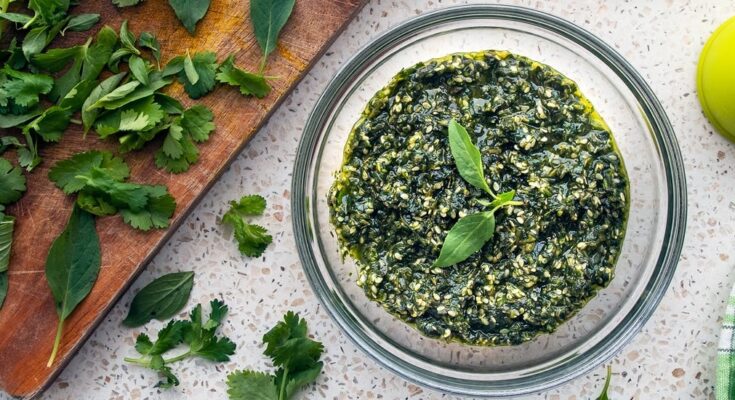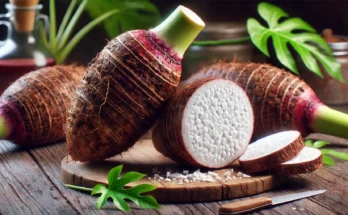Introduction: Pesto – A Timeless Culinary Delight
Pesto, the aromatic and versatile Italian sauce, has gained global popularity for its vibrant green color, bold flavors, and endless possibilities. Traditionally made with basil, pine nuts, garlic, Parmesan cheese, and olive oil, pesto is typically used to enhance pasta dishes but has also found its way into countless other culinary creations. From sandwiches to salads, roasted vegetables to pizza, pesto brings a burst of fresh, herbaceous flavor that elevates any dish.
In this article, we will explore five unique homemade pesto recipes that you can try, each offering a twist on the classic. Whether you’re looking for a dairy-free alternative, something with a bit more heat, or a creative new pesto flavor, this guide will inspire you to customize and experiment with your pesto creations. You’ll learn not only how to make the perfect pesto but also how to adapt it to suit your tastes, dietary needs, and available ingredients.
1. Classic Basil Pesto: A Timeless Favorite
Before we dive into more unconventional options, let’s start with the foundation of pesto—the classic basil pesto. This recipe is the epitome of simplicity, showcasing the natural, fragrant flavors of fresh basil, combined with the richness of pine nuts, garlic, Parmesan, and extra virgin olive oil. The balance between herbal, nutty, garlicky, and cheesy flavors makes this pesto a crowd-pleaser.
Ingredients:
2 cups fresh basil leaves (packed)
1/3 cup pine nuts
2 cloves garlic
1/2 cup freshly grated Parmesan cheese
1/2 cup extra virgin olive oil
Salt and pepper to taste
Juice of 1/2 lemon (optional, for a touch of acidity)
Instructions:
Toast the pine nuts: In a dry skillet, toast the pine nuts over medium heat for about 2-3 minutes, stirring constantly, until golden brown. This enhances their nutty flavor.
Blend the ingredients: In a food processor, combine the basil leaves, toasted pine nuts, garlic, and Parmesan. Pulse until everything is finely chopped.
Add the oil: With the processor running, slowly drizzle in the olive oil until the mixture forms a smooth paste. Scrape down the sides as needed to ensure everything is evenly incorporated.
Season to taste: Taste the pesto and adjust the seasoning with salt, pepper, and a squeeze of lemon juice if desired.
Serve and store: Toss with pasta, spread on sandwiches, drizzle over grilled vegetables, or store in an airtight container in the fridge for up to a week. To preserve the vibrant green color, top with a thin layer of olive oil before storing.
Customizing Your Basil Pesto:
Nuts: While pine nuts are traditional, you can also substitute them with walnuts, almonds, or cashews for a different flavor profile.
Cheese: If you’re dairy-free, skip the Parmesan and try nutritional yeast or a vegan Parmesan alternative.
Garlic: Adjust the amount of garlic based on your preference—more for a stronger punch, less for a milder flavor.
2. Sun-Dried Tomato Pesto: Rich and Bold
If you’re a fan of deep, savory flavors, the sun-dried tomato pesto is an excellent variation to try. The rich, umami-packed sun-dried tomatoes add a depth of flavor that complements the classic pesto base. This pesto is ideal for adding a Mediterranean twist to your dishes.
Ingredients:
1/2 cup sun-dried tomatoes (packed in oil)
2 cups fresh basil or spinach
1/4 cup almonds or walnuts
2 cloves garlic
1/4 cup Parmesan or vegan cheese
1/3 cup extra virgin olive oil
Salt and pepper to taste
Red pepper flakes (optional for heat)
Instructions:
Soak the sun-dried tomatoes: If your sun-dried tomatoes are not packed in oil, soak them in warm water for about 20 minutes to soften them before use.
Prepare the pesto: In a food processor, combine the sun-dried tomatoes, basil, garlic, nuts, and cheese. Pulse until everything is finely chopped.
Add the oil: Slowly drizzle in the olive oil while the processor is running until the pesto reaches your desired consistency.
Season: Taste and adjust the seasoning with salt, pepper, and red pepper flakes if you like a bit of spice.
Serve and store: This pesto pairs wonderfully with pasta, as a spread for sandwiches, or as a topping for grilled meats. Store in an airtight container in the fridge for up to a week.
Customizing Your Sun-Dried Tomato Pesto:
Nuts: Swap almonds for pine nuts, or use cashews for a creamier texture.
Herbs: You can mix basil with parsley or oregano for a different herbal base.
Heat: Add more or less red pepper flakes depending on how much spice you prefer.
3. Kale and Walnut Pesto: A Nutrient-Packed Alternative
Kale is a superfood that can elevate the nutritional profile of any dish, and when paired with hearty walnuts, it makes for an earthy, robust pesto that’s both satisfying and healthy. This variation is perfect for those looking to boost their greens and add a rich, nutty flavor to their meals.
Ingredients:
2 cups kale leaves (stems removed)
1/2 cup walnuts (toasted if preferred)
1/4 cup nutritional yeast (or Parmesan if not vegan)
2 cloves garlic
1/3 cup olive oil
Juice of 1/2 lemon
Salt and pepper to taste
Instructions:
Prepare the kale: If the kale is tough, blanch it briefly in boiling water for 1-2 minutes and then cool it under cold running water to retain its vibrant color.
Toast the walnuts: Toast the walnuts in a dry pan over medium heat for a few minutes until they become fragrant.
Blend the pesto: In a food processor, combine the kale, walnuts, garlic, and nutritional yeast. Pulse until the ingredients are finely chopped.
Add the oil: Slowly stream in the olive oil while the processor runs, blending until the pesto reaches a creamy consistency.
Season: Taste and adjust the seasoning with salt, pepper, and a squeeze of lemon juice.
Serve and store: This pesto is perfect for tossing with pasta, drizzling over roasted vegetables, or spreading on toast. Store in the fridge for up to a week.
Customizing Your Kale and Walnut Pesto:
Nuts: If you prefer a milder flavor, swap walnuts for pecans or almonds.
Cheese: Use vegan cheese or nutritional yeast to keep it dairy-free.
Greens: You can experiment with other leafy greens such as spinach, arugula, or Swiss chard for different tastes.
4. Cilantro Lime Pesto: A Zesty Twist
For a fresh, zesty pesto with a burst of citrus and herbaceous flavors, the cilantro lime pesto is a unique take that brings the bright flavors of Latin American cuisine to your table. The addition of lime juice and cilantro offers a tangy, refreshing twist on the classic pesto.
Ingredients:
2 cups fresh cilantro leaves
1/3 cup pumpkin seeds or sunflower seeds (for a nut-free version)
2 cloves garlic
1/4 cup nutritional yeast or Parmesan
1/4 cup olive oil
Juice of 1 lime
Zest of 1 lime
Salt and pepper to taste
Instructions:
Prepare the cilantro: Wash and dry the cilantro leaves thoroughly, removing any thick stems.
Blend the pesto: In a food processor, combine the cilantro, seeds, garlic, and nutritional yeast or Parmesan. Pulse until finely chopped.
Add the oil: Slowly drizzle in the olive oil as the processor runs to achieve a smooth consistency.
Season: Add the lime juice, lime zest, salt, and pepper. Taste and adjust the seasoning as needed.
Serve and store: This pesto is fantastic with grilled chicken, roasted fish, or spread over tacos. Store in an airtight container for up to a week.
Customizing Your Cilantro Lime Pesto:
Seeds: You can use sunflower seeds, pumpkin seeds, or even hemp seeds for a unique twist.
Heat: Add a small jalapeño or chili flakes for a spicy kick.
Cheese: Skip the cheese for a dairy-free version, or use a vegan Parmesan alternative.
5. Arugula and Lemon Pesto: Peppery and Bright
For those who enjoy bold, peppery flavors, the arugula and lemon pesto is an exciting variation. The sharp bite of arugula combined with the tang of fresh lemon creates a pesto that is both zesty and full of character. It’s the perfect way to bring a little brightness to your dishes.
Ingredients:
2 cups fresh arugula
1/3 cup cashews (or pine nuts)
2 cloves garlic
1/4 cup Parmesan or nutritional yeast
1/3 cup extra virgin olive oil
Zest and juice of 1 lemon
Salt and pepper to taste



